Today’s Current Affairs:6th October 2025 for UPSC IAS exams, State PSC exams, SSC CGL, State SSC, RRB, Railways, Banking Exam & IBPS, etc
Table of Contents
Nagarjunasagar-Srisailam Tiger Reserve:

The forest department is preparing to launch the next round of tiger census in the Nagarjuna Sagar Tiger Reserve (NSTR).
- It is located in the Nallamala hill ranges (an offshoot of the Eastern Ghats) of Andhra Pradesh.
- It is one of the largest tiger reserves in India, spreading over an area of 3,728 sq km.
- It hosts the largest tiger population in the Eastern Ghat landscape.
- It is named after two major dams in the area, Nagarjuna Sagar Dam and Srisailam Dam.
- Two wildlife sanctuaries, namely Rajiv Gandhi Wildlife Sanctuary and Gundla Brahmeswaram Wildlife Sanctuary (GBM), constitute the NSTR.
- The river Krishna traverses through this reserve for a linear distance of around 270 kilometers.
- The reserve holds significant importance with ancient temples like the Mallikarjuna Swamy Temple at Srisailam and several archaeological sites, including Buddhist relics from the Nagarjuna Konda area.
- It consists of plateaus, ridges, gorges, and deep valleys.
- Tropical dry deciduous forests having an undergrowth of bamboo and grass.
- The habitat has several endemics like Andrographis nallamalayana, Eriolaena lushingtonii, Crotalaria madurensis Var, Dicliptera beddomei, and Premna hamiltonii.
- Top faunal species include Tiger, Leopard, Wolf, Wild Dog and Jackal.
- The prey species are represented by Sambar, Chital, Chowsingha, Chinkara, Mouse Deer, Wild boar, and Porcupine.
- The river Krishna has Muggers, Otters and Turtles.
Amphipods:
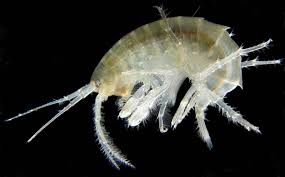
Two new species of marine amphipods, Grandidierella geetanjalae and Grandidierella khambhatensis, have been found by a team of researchers from Chilika and the Gulf of Khambhat, recently.
- Amphipods are a type of small crustacean.
- They are related to crabs, lobsters, and shrimp.
- They can be found in almost all water environments.
- They live in the ocean, in fresh water, and even on land.
- The name ‘amphipoda’ means “different-footed.”
- This is because they have many different kinds of legs.
- Unlike some other crustaceans, their legs are not all the same.
- There are over 7,000 known species of amphipods. Most of them belong to a group called Gammaridea.
- Amphipods can be very tiny, about 0.1 centimeters (0.04 inches) long. But some can grow quite large, up to 34 centimeters (13 inches).
- Most amphipods eat tiny bits of dead plants and animals. Some are also scavengers, eating what they find.
- They live in many places.
- About 750 species live in caves.
- Some amphipods are terrestrial animals, like sandhoppers.
- The largest amphipods live deep down on the sea floor. They can be found seven kilometers (about 4.3 miles) deep.
Grandidierella geetanjalae and Grandidierella khambhatensis:
- They are two new species of marine amphipods.
- Grandidierella geetanjalae was collected from the Chilika lagoon near Rambha in Ganjam district, Odisha.
- Grandidierella khambhatensis was collected from the Gulf of Khambhat, Gujarat.
- Both species measure between 5.5 and 6 mm in length.
- They are detritivorous, feeding primarily on organic matter and playing an important role in maintaining ecosystem health by contributing to natural cleaning processes.
Pilia malenadu:
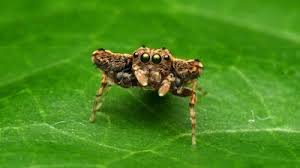
A team of researchers exploring biodiversity in the Western Ghats recently discovered a new species of spider named Pilia malenadu.It is a new species of spider.
- It belongs to Pilia, a genus of jumping spiders.
- It was discovered in Madhugundi in the Mudigere taluk of Chikkamagaluru, Karnataka, at the foothills of the Western Ghats.
- The researchers named it “Pilia malenadu”, to give credit to the place it was found.
- The discovery is significant because the last time a species of spiders belonging to the pilia genus was discovered was about 123 years ago (1902) in Kerala.
- Further, the researchers, for the first time, have found both male and female spiders of the species.
- These spiders were found in only two plant species — Memecylon umbellatum and Memecylon malabaricum.
- In fact, the spiders were found concealed between the leaves of these plants.
Silicon Carbide:
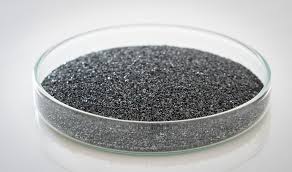
The Chief Minister of Odisha performed the groundbreaking ceremony for the country’s first end-to-end silicon carbide semiconductor production plant.
- Silicon Carbide is a synthetically produced crystalline compound of silicon and carbon.
- Its chemical formula is SiC and it is the most widely used non-oxide ceramic.
- It was discovered by the American inventor Edward G. Acheson in 1891.
- It is the hardest ceramic material and has excellent thermal conductivity, low thermal expansion.
- It is also classed as a semiconductor, having an electrical conductivity between that of metals and insulating materials.
- It has excellent mechanical properties, and excellent resistance to wear and oxidation.
- Its primary application is as an abrasive because of its high hardness, which is surpassed only by diamond, cubic boron nitride, and boron carbide.
- It is used in refractory linings and heating elements for industrial furnaces, in wear-resistant parts for pumps and rocket engines.
- It is used in semiconducting substrates for light-emitting diodes.
- It is a promising ceramic material with excellent thermo mechanical characteristics.
Melatonin : Concern

Concerns have been raised by doctors about melatonin supplements being taken by a large number of people with no medical supervision.
- Melatonin is a naturally-occurring hormone in human beings that controls sleep and wake cycles in our daily lives.
- Its levels rise in the evening, helping to promote sleep.
- It is secreted by the pineal gland in human body.
- Pineal gland releases the most melatonin when there’s darkness and decreases melatonin production when you’re exposed to light.
- Melatonin can also be made synthetically in a lab and sold as a dietary supplement. It’s called exogenous melatonin.
- Those people whose sleep is not optimal and who travel frequently across time zones prefer melatonin supplements.
- Overuse of melatonin may cause headaches, hormonal changes, or mood swings, disturbing the very rhythm and sleep cycle.
Integrated Sohra Tourism Circuit:
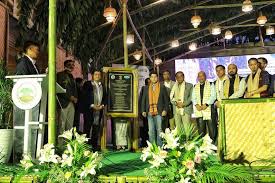
The Union Minister for Development of North Eastern Region laid the foundation stone for the Integrated Sohra Circuit Development under the Prime Minister’s Development Initiative for North Eastern Region (PM-DevINE) scheme.
- It is jointly developed by the Ministry of DoNER and the Government of Meghalaya.
- It aims to transform Sohra into a multi-day experiential tourism destination rooted in sustainability and local livelihoods.
- Key Components of Integrated Sohra Tourism Circuit:
- Sohra Experience Centre: It will serve as the cultural nucleus of the circuit, showcasing Meghalaya’s diverse tribal heritage through amphitheatres, rain experience parks, art galleries, and craft pavilions.
- Supporting projects: It includes Nohkalikai Falls precinct, Mawsmai Eco Park, Shella Riverside Development, and Wahkaliar Canyon with adventure tourism.
PM-DevINE scheme:
- The Prime Minister’s Development Initiative for North Eastern Region (PM-DevINE), was launched in 2022 as a Central Sector scheme, with 100% Central funding.
- The scheme has an outlay of Rs.6,600 crore for the 4 year period from 2022-23 to 2025-26.
Pampadum Shola National Park:
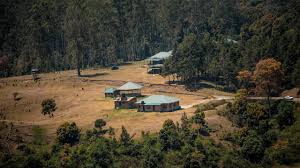
The Pampadum Shola National Park which was once dominated by invasive Australian wattles is undergoing a remarkable transformation and its grasslands are being restored, reviving streams and native species.
- It is located in the eastern part of Southern Western Ghats of
- It is the smallest national park of Kerala and shares a border with Dindigul district of Tamil Nadu.
- It was declared a national park in 2004.
- It is the southernmost shola–grassland mosaic in the Western Ghats, one of the world’s oldest mountain systems predating the Himalayas.
- It is a part of Palani hills stretched up to Vandaravu peak.
- It connects the Eravikulam National Park and the Palani Hills, providing a free range for many animals.
- Pampadum Shola Forests receive heavy rain in the North-East monsoon.
- The terrain is undulating with hillocks of varying heights. The altitudes range between 1600-2400 m.
- The park’s unique shola forests are a mix of grasslands and patches of tropical montane forests. The park is rich in medicinal plants, orchids, ferns, and other native species.
- Fauna:Nilgiri marten, Kerala laughing thrush, black-and-orange flycatcher etc.
Encephalomyocarditis Virus:
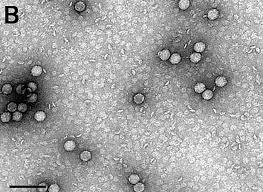
An autopsy report from the Indian Veterinary Research Institute revealed that lone African elephant at the National Zoological Park in Delhi died in due to the rare rodent-borne virus — encephalomyocarditis virus (EMCV).
- It is a non-enveloped, positive-sense, single-stranded RNA virus that is part of the Cardiovirus genus and Picornaviridae family.
- It is the causative agent of encephalomyocarditis (EMC) infection in swine and other mammals.
- African elephants are particularly susceptible to the virus, with outbreaks reported worldwide in captivity and in the wild.
- EMCV is a zoonotic disease, therefore humans are susceptible to infection. Most infections in humans are asymptomatic.
- The virus can be transmitted by food or water contamination caused from feces or urine of a rodent species.
- Symptoms of EMCV infection in humans can include fever, headache, muscle aches, nausea, vomiting, and in severe cases, neurological symptoms like confusion and seizures.
- Hosts of EMCV: Pigs, non-human primates, zoo animals, and various wild species can be affected.
- Treatment: Supportive care to manage symptoms and complications, with no specific treatment available.
Asia-Pacific Economic Cooperation (APEC) Summit 2025:
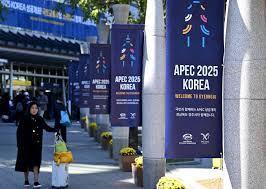
The Asia-Pacific Economic Cooperation (APEC) Summit 2025, held in Gyeongju, South Korea, concluded with the adoption of the APEC Leaders’ Gyeongju Declaration (2025), reaffirming regional cooperation, digital transformation, and inclusive economic growth.
Highlights:
- Adoption of the Gyeongju Declaration (2025): The declaration reaffirmed APEC leaders’ commitment to inclusive economic growth, recognising the transformative impact of Artificial Intelligence (AI) and demographic shifts on labour markets.
- It outlined three priorities:
- Building the world’s most dynamic and interconnected regional economy.
- Preparing the region for digital and AI transformation
- Addressing shared challenges and ensuring growth benefits all
- APEC Artificial Intelligence (AI) Initiative (2026-2030): The AI initiative seeks to drive inclusive, resilient growth by boosting innovation, cooperation, capacity building, and sustainable, energy-efficient AI development.
- Framework for Demographic Changes: Adopted by APEC, it addresses the region’s challenges of ageing populations, declining birth rates, and rapid urbanisation.
- It urges people-centred, intergenerational policies for resilient and inclusive growth, and promotes shared policy responses, social innovation, stronger employment, fiscal resilience, and a “silver economy” for ageing populations.
- Strengthened Economic and Technological Cooperation: China–South Korea renewed a currency swap and signed a cybersecurity MoU, US–China talks on the sidelines of the summit signaled easing tensions with plans to restart trade talks and cut select tariffs.
- Support for Inclusive, Rules-Based Multilateralism: Leaders reaffirmed the Putrajaya Vision 2040, stressing free and fair trade, predictable investment, and cooperation through multilateralism over fragmentation.
- Putrajaya Vision 2040 is a long-term strategic plan adopted by the APEC in 2020 to foster an open, dynamic, resilient, and peaceful Asia-Pacific community.
APEC :
- It was founded in 1989, is a regional forum of 21 economies that promotes balanced, inclusive, sustainable, and innovative growth while advancing regional economic integration across the Asia-Pacific.
- It uses the term “economies” instead of “countries” to stress economic cooperation over political representation.
- APEC works to ease the movement of goods, services, investments, and people by streamlining customs, improving business conditions, and aligning regional regulations and standards to boost trade and integration.
- Members: Australia, Brunei Darussalam, Canada, Chile, China, China, Indonesia, Japan, Republic of Korea, Malaysia, Mexico, New Zealand, Papua New Guinea, Peru, the Philippines, Russia, Singapore, Chinese Taipei, Thailand, US, and Viet Nam.
IPPB–EPFO MoU for Jeevan Pramaan Services:
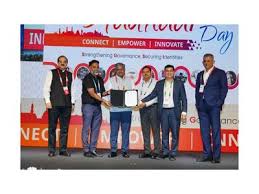
India Post Payments Bank (IPPB) has signed an MoU with the Employees’ Provident Fund Organisation (EPFO) to provide doorstep Digital Life Certificates (Jeevan Pramaan) services for pensioners under the Employees’ Pension Scheme, 1995 a key move toward inclusive and technology-driven pension delivery.
- Jeevan Pramaan is an Aadhaar-based, biometric-enabled Digital Life Certificate (DLC) for pensioners.
- It verifies the pensioner’s existence and ensures continuous pension credit into their bank account.
- Eligibility: Pensioners from the central, state, or any other government agency are eligible to use this service.
- IPPB, launched in 2018, operates under the Department of Posts, Ministry of Communications, and is headquartered in New Delhi, India.
- It aims to provide affordable and accessible banking services, especially in rural and underserved areas, by using India Post’s vast network to deliver doorstep financial inclusion across the country.
Foreign Liabilities and Assets (FLA) Census 2024-25:
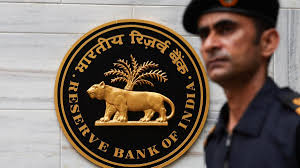
According to the Reserve Bank of India’s 2024–25 Foreign Liabilities and Assets (FLA) census, the US and Singapore together contributed over one-third of India’s total Foreign Direct Investment (FDI), reaffirming their position as India’s top investment partners.
- Top Investors: The US (20%) and Singapore (14.3%) together contributed over one-third of total FDI, followed by Mauritius, the UK, and the Netherlands.
- Foreign Dominance: More than 75% of FDI-reporting firms were foreign subsidiaries, reflecting strong overseas ownership and technology inflows.
- Sectoral Focus: Manufacturing attracted the highest FDI (48.4% market value), followed by services, aligning with India’s industrialisation goals.
- Rising Inflows: Total FDI stock rose to Rs 68.75 lakh crore in FY25, up from Rs 61.88 lakh crore in FY24, marking an 11.1% annual growth. showing steady confidence in India’s economy.
- Outward Expansion: Outward Direct Investment (ODI) (domestic firm expands its operations to a foreign country) stood at Rs 11.66 lakh crore, with top destinations being Singapore, US, UK, and Netherlands.
- ODI growth (17.9%) outpaced FDI growth (11.1%), reducing the inward-to-outward DI ratio from 6.3 to 5.9 times year-on-year.
- Industrial Strength: Non-financial companies held over 90% of total FDI equity, showing dominance of core sectors.
Tractor Emission Norms (TREM):

Farmers’ organisations have opposed the Union government’s proposal to implement Tractor Emission Norms (TREM) Stage V for tractors from 1st October 2026, urging that the rules would force farmers to buy new tractors, increasing debt and economic hardship.
- TREM: These are pollution-control standards set by the government to regulate and reduce harmful exhaust emissions from agricultural tractors and farm machinery.
- They are similar to Bharat Stage (BS) norms for other vehicles but are specifically designed for agricultural equipment to limit pollutants like NOx, particulate matter (PM), hydrocarbons, and carbon monoxide.
- TREM Stages: India introduced tractor emission norms in 1999, followed by Bharat (Trem) Stage II in 2003 based on the Expert Committee on Auto Fuel Policy (Mashelkar Committee, 2002), and Bharat (Trem) Stage -III in 2005.
- TREM-IIIA (2010–11) brought horsepower (HP)-based limits, and TREM-IV was implemented in 2023 for tractors above 50 HP to further curb emissions.
The Research, Development and Innovation (RDI) Scheme:

Prime Minister of India inaugurated the Emerging Science & Technology Innovation Conclave (ESTIC) 2025 at Bharat Mandapam, New Delhi, and launched the ₹1 lakh-crore Research, Development, and Innovation (RDI) Scheme Fund to boost private investment in high-risk, high-impact R&D projects.
- India is making a decisive shift toward an innovation-driven economy, strengthening collaboration between academia, industry, and government to pursue high-risk, high-impact technologies.
- GERD trend: The nation’s Gross Expenditure on R&D has doubled from ₹60,196.75 crore in 2010–11 to ₹1,27,380.96 crore in 2020–21, though it still remains below 0.7% of GDP, far lower than global leaders.
- The Central Government contributes about 43.7% of total R&D spending, with the government sector accounting for 64% and the private sector 36%, showing the need for greater corporate participation.
- Human capital: India awarded 40,813 doctorates in 2018–19, with 60% in Science and Technology, ranking third globally in S&E PhDs and highlighting strong potential for research expansion.
- Patent filings in India tripled from 24,326 in 2020–21 to 68,176 in 2024–25, reflecting a surge in domestic innovation and intellectual property creation.
The Research, Development & Innovation (RDI) Scheme:
- A landmark ₹1 lakh-crore corpus, launched on November 3, 2025, to fund and refinance private-sector research, development, and innovation (RDI) projects through long-tenure, low or zero-interest loans—promoting bold, high-risk scientific ventures.
- Aim: To de-risk high-TRL and high-impact projects, attract private capital into frontier technologies, and accelerate the lab-to-market transition in areas critical to national competitiveness and self-reliance.
QS Asia University Rankings 2026:
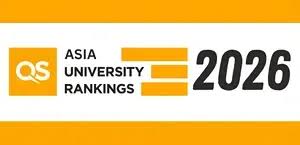
Prime Minister of India hailed India’s record performance in the QS Asia University Rankings 2026, where 294 Indian universities were listed — the highest ever.
- The QS Asia University Rankings is an annual regional assessment that evaluates Asia’s leading higher education institutions based on academic reputation, employability, research productivity, and international outlook.
- Published by: Compiled by Quacquarelli Symonds (QS), a UK-based higher education analytics firm, known globally for its QS World University
Top 5 Indian Institutions (QS Asia University Rankings 2026):
- IIT Delhi – Rank 59 (fell from 44th in 2025)
- IISc Bengaluru – Rank 64
- IIT Madras – Rank 70
- IIT Bombay – Rank 71
- IIT Kanpur – Rank 77
Top 5 Universities in Asia (QS Asia University Rankings 2026):
- The University of Hong Kong – Rank 1
- Peking University (China) – Rank 2
- Nanyang Technological University (Singapore) – Rank 3
- National University of Singapore (NUS) – Rank 3 (joint)
- Fudan University (China) – Rank 5
Compressive Asphyxia:
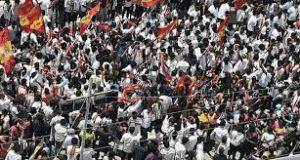
The death toll in the stampede at Tamilaga Vetri Kazhagam’s (TVK) rally at Velusamypuram has climbed to 41, with doctors attributing most fatalities to compressive asphyxia due to crowd crush.
- Asphyxia or asphyxiation occurs when the body does not get enough oxygen.
- Respiration is the process of air moving in and out of your lungs.
- Humans take in oxygen, which is circulated to all of the cells throughout the body via the blood, and carbon dioxide is then removed through the same system.
- When asphyxia occurs, and the body does not get the amount of oxygen it needs, it can cause a person to become unconscious or even die.
- This type of physical asphyxia happens when an outside force keeps you from expanding your chest to breathe.
- Your lungs are “crushed” and can’t take in air.
- This can happen from a crowd of people pressing against your body or a person’s weight on your chest.
Dhvani Missile:

India’s Defence Research and Development Organisation (DRDO) is on the verge of a historic breakthrough with the upcoming test of Dhvani, a cutting-edge hypersonic missile that promises to catapult the nation into an elite club of military superpowers.
- It is an hypersonic missile being developed by India’s Defence Research and Development Organisation (DRDO).
- The Dhvani is being developed as a Hypersonic Glide Vehicle (HGV), a revolutionary weapon system that combines blistering speed with unprecedented maneuverability.
- Unlike conventional cruise missiles that follow predictable flight paths, the Dhvani will be launched to extreme altitudes before gliding toward its target at hypersonic speeds.
- This unique capability makes it nearly impossible to detect and even harder to intercept, rendering most existing missile defense systems obsolete.
- It will be capable of striking both land-based and maritime targets with pinpoint precision.
- It can fly at speeds exceeding Mach 5 or 6, nearly 7,400 km per hour.
- It has estimated ranges between 6,000 to 10,000 kilometers.
- The missile features a blended wing-body configuration measuring approximately 9 meters in length and 2.5 meters in width.
- Its advanced heat protection system, utilizing ultra-high-temperature ceramic composites, can withstand temperatures between 2,000-3,000°C generated during atmospheric reentry.
- The stealth-optimized geometry, including angled surfaces and smooth contours, dramatically reduces its radar cross-section, making it virtually invisible to enemy tracking systems.
Dark Stars:
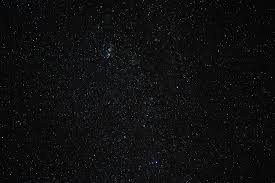
Astronomers recently unearthed evidence that some of the earliest luminous objects in the universe may be “dark stars”, stars powered not by nuclear fusion but by dark matter annihilation.
- Dark stars are hypothetical objects that may have inhabited the early universe.
- Scientists believe that dark stars might be the oldest stars in the history of the universe and may represent the first phase of stellar evolution.
- These stars are giant, much larger than our sun or any of the other stars around today.
- Dark stars aren’t actually dark; they just don’t emit any visible light.
- That’s because instead of nuclear fusion, which is the process that converts hydrogen into helium in the core of an ordinary star, dark stars are powered differently.
- Astronomers believe that dark matter heating is what powers them.
- Because there’s no fusion happening inside them, they aren’t very hot.
- Because dark stars don’t rely on core fusion to stave off gravitational collapse, they’re not extremely compressed like normal stars.
- Instead, dark stars are likely giant, puffy clouds that shine extremely bright.
- A single dark star from the early Universe could be as bright as an early galaxy containing many more standard stars.
- And even though they’d be massive — and potentially spewing gamma rays, neutrinos, and antimatter — so far, they’ve been too faint to be detected because they don’t emit visible light.
Mono Ethylene Glycol:
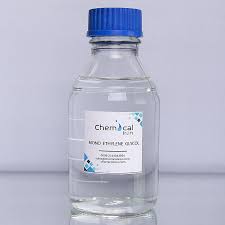
The textile industry has appealed to the government not to levy anti-dumping duty on Mono Ethylene Glycol (MEG), which is one of the main raw materials used in the production of polyester fibre and filament.
- Mono Ethylene Glycol (MEG) is an organic compound with the formula C2H6O2.
- It is also called ethylene glycol or just glycol.
- It is a slightly viscous liquid with a clear, colourless appearance and a sweet taste that emits virtually no odour.
- It’s miscible with water, alcohol, and many other organic compounds.
- It is produced from the reaction between water and ethylene oxide.
- It is hygroscopic, meaning it can absorb water from its surroundings, and this property makes it useful as a dehydrating agent in various applications.
- MEG has a relatively low toxicity and is considered safe for many industrial and commercial uses.
- MEG is most commonly used in the manufacture of polyester fibre, fabrics, and polyethylene terephthalate (PET) resin used for the production of plastic bottles.
- Other industrial uses are as a coolant, heat transfer agent, antifreeze, and hydrate inhibitor in gas pipelines.
NATO Pipeline System:
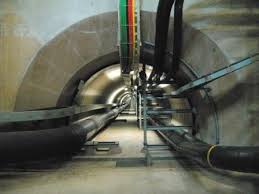
Poland government said that it will finally join the NATO Pipeline System (NPS).
- It was set up during the Cold War to supply NATO forces with fuel.
- It is approximately 10,000 kilometres long, runs through 12 NATO countries and has a storage capacity of 4.1 million cubic metres.
- The NPS links together storage depots, military air bases, civil airports, pumping stations, truck and rail loading stations, refineries and entry/discharge points.
- Funding: Bulk distribution is carried out using facilities from the common-funded NATO Security Investment Programme.
- Controlled by: The networks are controlled by national organisations, with the exception of the Central Europe Pipeline System (CEPS), which is a multinational system managed by the CEPS Programme Office under the aegis of the NATO Support and Procurement Agency.
- It is overseen by the Petroleum Committee, which is the senior advisory body in NATO on consumer logistics and, more specifically, on petroleum issues.
- It reports to the Logistics Committee on all matters of concern to NATO in connection with military fuels and other petroleum installations.
- The NPS consists of eight national pipeline systems and two multinational systems.
Pulicat Lake:
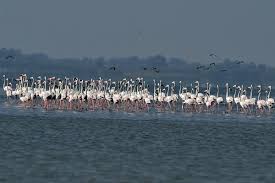
Pulicat lake fishermen demanded a long-term solution as silt threatens lake livelihoods.
- Pulicat Lake is a vast coastal shallow, brackish water lagoon along the coast of Bay of Bengal.
- It is the second largest brackish water lagoon in India after Chilika, sprawling across Andhra Pradesh and Tamil Nadu.
- This lagoon is separated from the Bay of Bengal by the Sriharikota island.
- It is fed by the Aarani River at the southern tip and the Kalangi River from the northwest. The Buckingham Canal, a navigation channel, passes through the lagoon.
- It was designated as a Ramsar site in 2002.
- It is a unique ecotone that supports rich biodiversity — from aquatic life such as mudskippers, seagrass beds, and oyster reefs to more than 200 avian species,
- The green kingdom is represented with about 132 plant species like Walsura piscida; Manilkara elengi, Excoecaria agallocaha, Spinifex littoreus, Calamus viminalis, etc.
- It includes migratory birds such as Eurasian curlews, oystercatchers, bar-tailed godwits, sand plovers, and greater flamingos.
Painted stork:
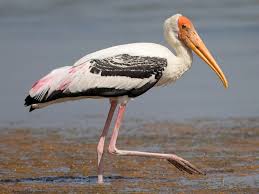
After a four-year hiatus, a pair of painted storks has been spotted in Kaziranga National Park and Tiger Reserve (KNPTR).
- It is a large wading bird belonging to the stork family.
- These birds are found across the plains of tropical Asia, from the Indian Subcontinent extending into Southeast Asia, south of the Himalayas.
- They favor freshwater wetlands, but they also frequent irrigation canals and agricultural fields, particularly during the monsoon when rice fields are flooded.
- They are not migratory and only make short-distance movements in some parts of their range in response to changes in weather or food availability or for breeding.
- Painted storks are carnivores (piscivores).
- Their diet consists mainly of small fish, but also crustaceans, amphibians, insects, and reptiles.
- Painted storks are the only storks within the genus Mycteria that have a black pectoral band.
- Males and females are not sexually dimorphic; however, male painted storks tend to be slightly larger than female storks.
- Conservation Status: It is classified as near threatened under the IUCN Red List
Akshar Fast Patrol Vessel:

Indian Coast Guard Ship (ICGS) Akshar was commissioned at Karaikal, Puducherry.
- It is the second in a series of eight Adamya-class Fast Patrol Vessels (FPVs).
- The name ‘Akshar’ meaning ‘imperishable’, symbolises the ICG’s steadfast resolve and commitment to ensuring safe, secure, and clean seas.
- It has been designed and built indigenously by Goa Shipyard Limited and contains over 60% indigenous content.
- The ship displaces approx. 320 tons and is propelled by two 3,000 KW diesel engines, enabling a maximum speed of 27 Knots.
- It has an endurance of 1,500 nautical miles at an economical speed.
- ICGS Akshar is fitted with indigenously developed two Controllable Pitch Propellers (CPP) and gearboxes, offering superior maneuverability, operational flexibility and enhanced performance at sea.
- The vessel also features an Integrated Bridge System (IBS), Integrated Platform Management System (IPMS), and Automated Power Management System (APMS), augmenting operational efficiency and automation.
- The ship will be based at Karaikal, Puducherry, under the administrative and operational control of Commander Coast Guard Region (East).
Baratang Island:

India’s only mud volcano at Baratang in Andaman and Nicobar Islands has again erupted.
- It is located in the North and Middle Andaman district, and it is nearly 150 km away from Port Blair.
- It is a very popular tourist spot because it is India’s only mud volcano.
- It was erupted recently in 2005 owing to the oceanic seismic shifts.
- The mud volcanoes in Baratang Islands are the only known volcanoes in the Indian sub-continent.
- It is also home to the Jarawa tribe, one of the indigenous tribes of the Andaman and Nicobar Islands.
- Mud volcanoes, also called ‘Mud Domes,’ are formed by the eruption of mud slurries, water, and gases involving a series of geological processes.
- Unlike actual ingenious volcanoes, mud volcanoes don’t throw out lava when they erupt.
- It is a geological formation where a mixture of mud, water, and gases (mainly methane, sometimes carbon dioxide or nitrogen) erupts to the surface, creating cone-like structures that resemble true volcanoes without molten lava.
- The sizes of mud volcanoes lie between one and two meters to 700 meters high and between one and two meters to 10 kilometers wide.
- Mud volcanoes also exist on the floor of the sea and can form islands and banks that alter the topography and shape of the coastline.
E- Waste : Report

India generated 2.2 million metric tonnes (MT) of e-waste in 2025, becoming the third-largest global generator after China and the US. However, informal recycling exposes millions, especially marginalised communities, to serious health risks, making it a major urban challenge.
- E-waste, or electronic waste, refers to discarded or end-of-life electronic devices and equipment. It includes items such as computers, televisions, mobile phones, printers, refrigerators, and air conditioners.
- These products often contain toxic substances like lead, mercury, cadmium, and chromium.
Current Status of E-waste in India:
- Rapid Growth: E-waste generation recorded a 150% surge from the 0.71 million MT recorded in 2017–18. At current rates, this volume is expected to nearly double by 2030 in India.
- Urban Hotspots: The crisis is concentrated in cities, with over 60% of e-waste originating from just 65 urban centers. Key hotspots include Seelampur and Mustafabad in Delhi, Moradabad in Uttar Pradesh, and Bhiwandi in Maharashtra.
- Informal Recycling: India has 322 registered formal recycling units with a capacity of 2.2 million MT annually, yet over half of e-waste (43% officially processed in 2023–24) is processed informally or not recycled.
E-waste Management Frameworks in India:
- E-Waste (Management) Rules, 2016: It introduced the concept of a Producer Responsibility Organization (PRO).
- E-Waste (Management) Rules 2022: Under Extended Producer Responsibility (EPR), producers must meet annual recycling targets through registered recyclers, with EPR certificates ensuring accountability for recycled products.
- Public institutions must dispose of e-waste through registered recyclers/refurbishers, who handle collection and processing.
- E-Waste (Management) Second Amendment Rules, 2023: Under Rule 5 of the E-Waste (Management) Rules 2022, Clause 4 was added to ensure safe and sustainable management of refrigerants in refrigeration and air-conditioning manufacturing.
- E-Waste (Management) Amendment Rules, 2024: The rules provide for the creation of platforms for trading EPR certificates as per Central Pollution Control Board (CPCB) guidelines with its approval.
- The CPCB will set the EPR certificate price range between 30% (minimum) and 100% (maximum) of the environmental compensation for non-compliance.
- Hazardous and Other Wastes (Management and Transboundary Movement) Amendment Rules, 2025: It introduces a comprehensive EPR framework for non-ferrous metal scrap, making producers responsible for recycling targets rising from 10% in 2026-27 to 75% by 2032-33.
White Rhino:

The Resurrection Quest, a documentary on cloning, gene editing, and species de-extinction, won the Gold Dolphin Award for showcasing efforts to save the northern white rhino.
- White Rhino are the second-largest land mammal.
- The species is split into two genetically distinct subspecies – Northern white rhino and Southern white rhino.
- Northern White Rhino: Only two females left (functionally extinct), both living in Ol Pejeta Conservancy, Kenya.
- Southern White Rhino: Found mostly in South Africa, Namibia, Zimbabwe, and Kenya (98.8% population).
- IUCN Status of White Rhino: Near threatened.
- Groups of up to 14 rhinos form, mainly females with calves. Adult males defend territories marked with scraped dung piles.
- Adult females have larger home ranges, while breeding females stay within a dominant male’s territory.
- Poaching is the primary threat.
- The northern white rhino nears extinction from decades of horn poaching.
Model Youth Gram Sabha(MYGS):
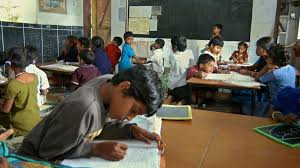
The Centre is set to launch the Model Youth Gram Sabha (MYGS), a school-based initiative inspired by Model UN simulations, to provide students practical exposure to local governance and Panchayati Raj functioning.
- Model UN simulations involve hundreds of thousands of students each year, helping them learn about the UN’s principles and functions.
- MYGS is a school-based initiative that introduces the democratic process of Gram Sabhas into classrooms across India, marking the first structured effort to involve students in grassroots governance.
- It aims to develop informed and responsible citizens who understand local governance, with students discussing issues and preparing village budgets and plans.
- It is an initiative of the Ministry of Panchayati Raj, in collaboration with Ministries of Education and Tribal Affairs.
- It will be launched in a phased manner, beginning with Jawahar Navodaya Vidyalayas (JNVs) and Eklavya Model Residential Schools (EMRS).
- Each participating school will receive Rs. 20,000 to conduct the mock Gram Sabha.
- Students of Classes 9–12 to role-play as sarpanch, ward members, village secretary, Anganwadi worker, ANM, junior engineers, etc.
- Teacher training provided through National Level Master Trainers (NLMTs).
- It features regional and national competitions with substantial prize money, along with certificates.
Safeguarding India’s Digital Economy:
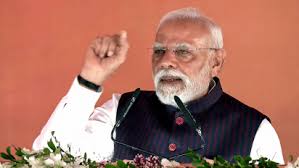
The Indian digital economy is in the spotlight after a sharp rise in sophisticated cyber frauds such as phishing, UPI/OTP scams, identity theft, and digital arrests.
- Over 13.9 lakh cybercrime cases were reported in India in 2023 (NCRB), but experts estimate many go unreported due to stigma or distrust in institutions.
- Social engineering is at the core—fear, greed, urgency—exploited via phishing, OTP/UPI frauds, loan/job scams, remote access malware, and fake government impersonations.
- Elderly and rural citizens: digitally illiterate yet financially vulnerable.
- Banks: often issue generic advisories, fail to detect abnormal transactions, and allow mule accounts with weak KYC.
- Cyber police: lack manpower, training, and AI-driven tools, reducing their effectiveness.
Constitutional and Institutional Dimensions:
- Right to Privacy (Justice K.S. Puttaswamy vs Union of India, 2017): Citizens’ personal and financial data must be protected as a fundamental right under Article 21.
- Article 300A: Protects property; digital financial frauds threaten citizens’ legitimate wealth.
- RBI Regulations: Banks are mandated to provide zero liability protection for victims in certain categories of digital fraud.
- CERT-In: Nodal agency under the IT Act for cybersecurity incidents, but lacks proactive capacity for retail-level fraud detection.
Cyclone Shakhti:

The India Meteorological Department (IMD) confirmed the formation of Cyclone Shakhti over the northeast Arabian Sea.
- A tropical cyclonic storm that developed in the northeast Arabian Sea, ~340 km west of Dwarka (Gujarat).
- Named “Shakhti” under the World Meteorological Organisation’s regional naming system.
- Formed due to low-pressure development over warm Arabian Sea waters in early October 2025.
- The system strengthened into a cyclonic storm (CS) on October 3 and is forecast to become a severe cyclonic storm (SCS) as it tracks west-southwestwards.
- Features:
- Brings strong winds, high sea waves, and heavy rainfall potential along coastal belts.
- Part of a trend of increasing Arabian Sea cyclones due to rising sea surface temperatures.
Presumptive Taxation:
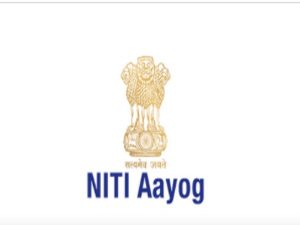
NITI Aayog, in its first Tax Policy Working Paper (2025), proposed an optional presumptive taxation regime for foreign firms to reduce litigation, simplify compliance, and bring certainty on Permanent Establishment (PE) disputes.
- Taxation based on a fixed deemed profit percentage of gross receipts, instead of detailed profit attribution through transfer pricing or functional analysis.
- Aim is to Provide certainty, reduce litigation, simplify compliance, and secure predictable revenue.
- It is Already applied in shipping (Sec. 44B), oil & gas services (44BB), airlines (44BBA), and small businesses (44AD/44ADA).
- Litigation-heavy regime : PE disputes take over a decade to resolve (e.g., Hyatt International 2025).
- Ambiguity in rules : Broad interpretation of “business connection” and Significant Economic Presence (SEP) deters investment.
- Retrospective taxation legacy : Vodafone-type cases damaged India’s image.
- Industry-specific deemed profit rates (e.g., 10% for EPC, 15% for marketing, 20% for services, 30% for digital/e-commerce).
- Firms can opt in, or opt out and file regular returns if actual profits are lower.
- If presumptive scheme is chosen, tax authorities will not separately litigate PE existence.
- Reduced need for audits and complex books; compliance burden minimized.
- Optional nature ensures alignment with DTAAs.
- Presumptive Taxation is based on a fixed deemed profit percentage of gross receipts, instead of detailed profit attribution through transfer pricing or functional analysis. Aim is to Provide certainty, reduce litigation, simplify compliance, and secure predictable revenue. Already applied in shipping (Sec. 44B), oil & gas services (44BB), airlines (44BBA), and small businesses (44AD/44ADA).
Australia Approves Alzheimer’s Drug Lecanemab for Early Stage Use:
Australia’s Therapeutic Goods Administration (TGA) has approved Lecanemab (marketed as Leqembi) for treating early-stage Alzheimer’s disease. This makes it only the second disease-modifying therapy to receive regulatory clearance in Australia. The decision, finalized in September 2025, comes amid rising Alzheimer’s prevalence—now the leading cause of death in the country. While Lecanemab offers hope to patients in early stages, it also raises critical questions about cost, accessibility, and safety.Lecanemab is a monoclonal antibody therapy that targets amyloid-beta plaques, a hallmark of Alzheimer’s disease. These plaques form when abnormal protein builds up between brain cells, disrupting communication and function.




